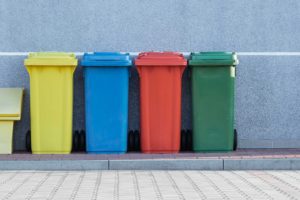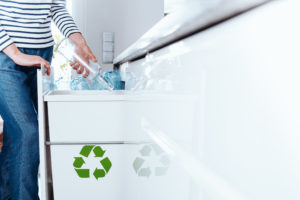
Blog
CPG Outlook 2022: Focus on Sustainability
Business commitments to sustainability in concert with dire warnings on climate change and investor pressure will accelerate environmental progress — but that progress will be mired if governments conflict or misunderstand the issues.
Earlier this year, the United Nations Climate Change report offered the world its most dire warnings yet, underscoring the devastating realities of further environmental degradation and the unnegotiable need for immediate action. The CPG industry is at the forefront of that action. A Consumer Brands analysis found that among 50 top CPG companies, all of them had clear commitments to address climate change, improve packaging sustainability and reduce water usage.
Implementation of these commitments is increasing. More than six-in-ten (61%) Americans feel that there is more pressure on companies to meet their environmental commitments today than in recent years. There is little difference between political parties on this point, with 65% of Republicans and 61% of Democrats in agreement.
Consumers’ have grown increasingly worried about the state of the planet. When Consumer Brands first polled consumers in April 2019, 74% expressed concern over the environment. By November 2021, that number had jumped to 80%, with another 84% specifically concerned about plastic and packaging waste.
Consumers’ concerns have also hit the investor community, which has sharpened its focus on corporate sustainability metrics. That focus is being amplified given a proposed SEC rule released in March that would require publicly traded companies to disclose to investors climate metrics including targets and goals, greenhouse gas emissions, “climate-related risks” impact on business and operations, and the mitigation efforts being deployed. If codified, the rule would impose new reporting duties creating reputational risk, new accountability measures and shifts with a variety of stakeholders. The bottom-line specifics create a new imperative for companies to view their sustainability commitments as not a goal but a scorecard.
“A company’s success and sustainability are inextricably linked,” said Consumer Brands’ Vice President of Packaging Sustainability John Hewitt. “CPG companies are leading on sustainability and appreciate that investors and others are seeking more information on how companies are driving environmental change.”
Seeing Green (With an Environmental Blind Spot)
One of the biggest roadblocks companies will face in meeting their packaging sustainability commitments is recycled content targets. As technology improves and enables more recycled content to be used — particularly in food packaging that has more stringent requirements from FDA — the demand for post-consumer material has swelled. The market, however, has not.
The domestic supply of recycled plastics is only able to meet six percent of current demand. David Cornell, the former technical director for the Association of Plastic Recyclers, estimated that to meet future demand, the U.S. recycling rate for PET containers will need to jump to at least 70 percent — it’s not even close to halfway there today. In fact, it’s declining. From the peak of 35% in 2017, the national recycling rate has dropped to 32%. For plastic, the situation is even worse, with only 8% recycled.
The culprit behind America’s low recycling rate is a broken system. In the U.S., nearly 10,000 local recycling programs set their own rules of what can and can’t be recycled, resulting in a patchwork that confuses and deters consumers. In Fairfax County, Va., for example, there are 13 private companies that handle residential pickup in addition to the county itself, which collects from only about 10% of residents. To determine what can be recycled, the county can only offer general guidelines, telling residents with private collection to ask the company responsible for their pickup for specifics. That leaves 14 possibilities within one county.
A Consumer Brands/Ipsos poll found that 71% of Americans feel the sheer number of systems creates confusion and 65% believe that recycling rules should be the same nationwide.
Investing in Recycling’s Environmental Potential
The potential of a functioning recycling system is enormous. The Tellus Institute found that significantly boosting the recycling rate has the potential to add 2.3 million jobs and reduce carbon emissions by nearly 515 million metric tons — equivalent to taking 50 million cars off the road.
Also enormous? The cost to fix America’s broken recycling system. The CPG industry is well aware it will take significant funding to achieve a functioning system and move close to a circular economy. And it stands ready to financially support making the system work. There are a variety of funding approaches that can be considered, though extended producer responsibility (EPR) has gained the most attention in the states in recent years.
Consumer Brands supports EPR and the accountability it requires of stakeholders across the packaging value chain to both understand and accept their contribution to the issues facing recycling in the U.S. and set tangible goals. The industry’s support is based on principles that ensure funding is dedicated, targeted and impactful.
“Throwing money at the problem doesn’t solve it, it only raises the cost of failure,” said Hewitt. “We need to develop uniform standards for recycling that allow us to make smart, data-driven decisions that direct smart investments and secure the system’s future.”
The Foundation That is Missing
Getting the data to make smart decisions is near impossible today. But establishing standardized definitions could eliminate the guesswork of what is recyclable in the morass of 10,000 systems and unlock the gateway to fixing the broken system.
Standardization of recycling definitions and rules would create a foundation of comparable data that will drive needs assessments that pinpoint areas to fix, practices to emulate and how to invest wisely. It would be the intelligence that drives better designed packaging, smart upgrades to infrastructure and technology and consistent consumer education to reduce contamination and increase properly recycled material.
“It is impossible to overstate how important standardization and reliable data are to fixing America’s broken recycling system. They are the foundation that recycling needs; we are otherwise building our house on sand,” said Hewitt.
Published on May 24, 2022




